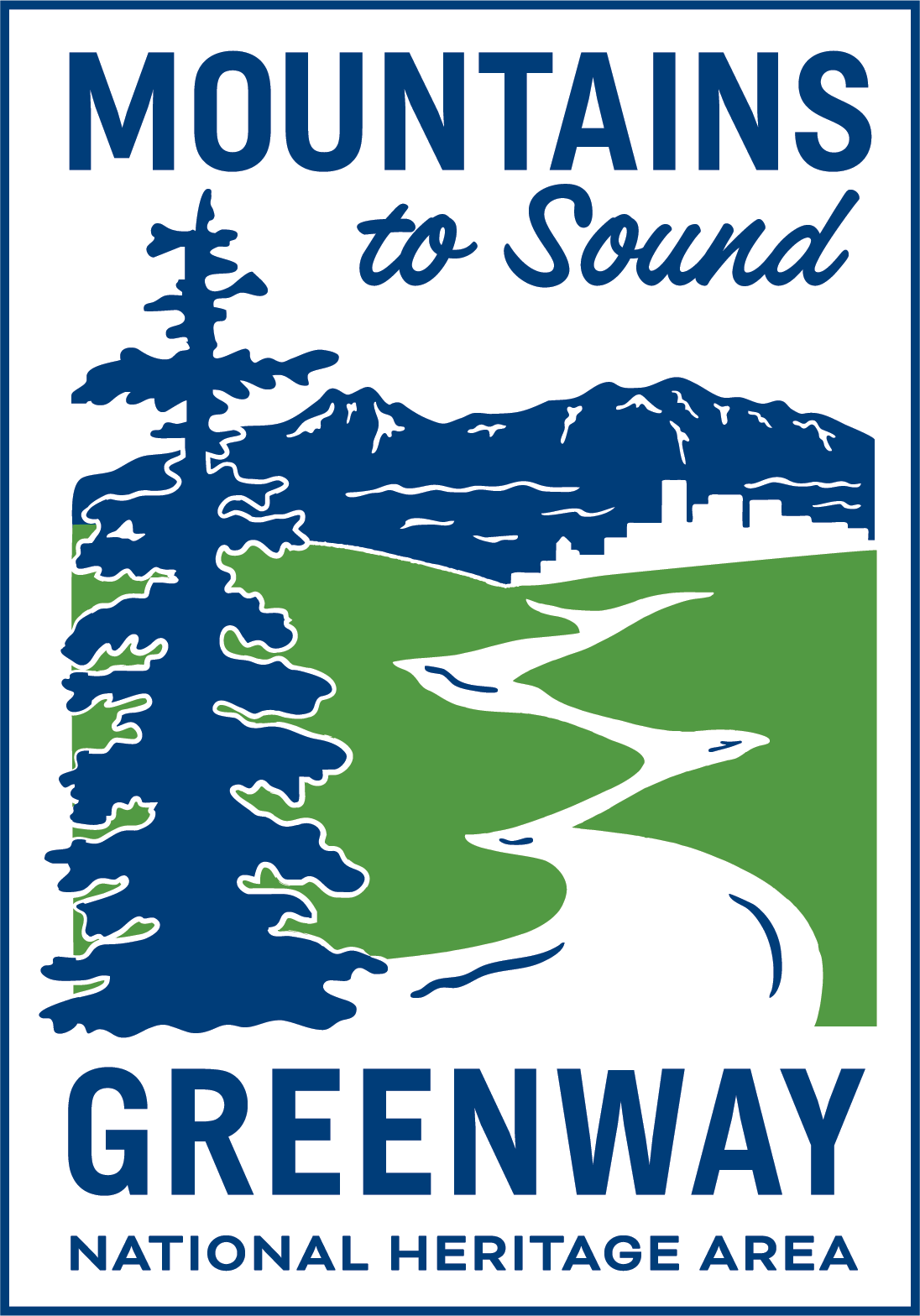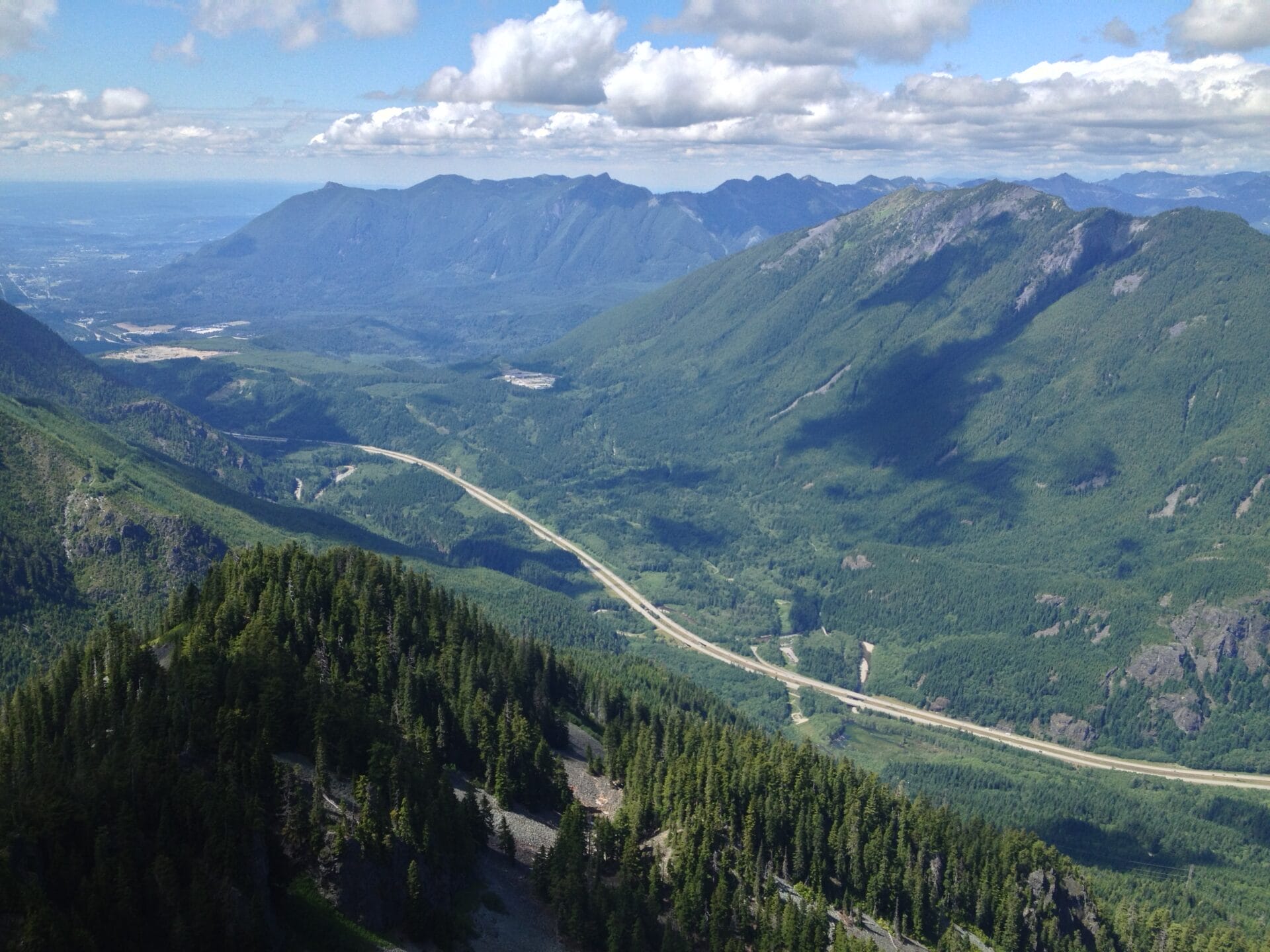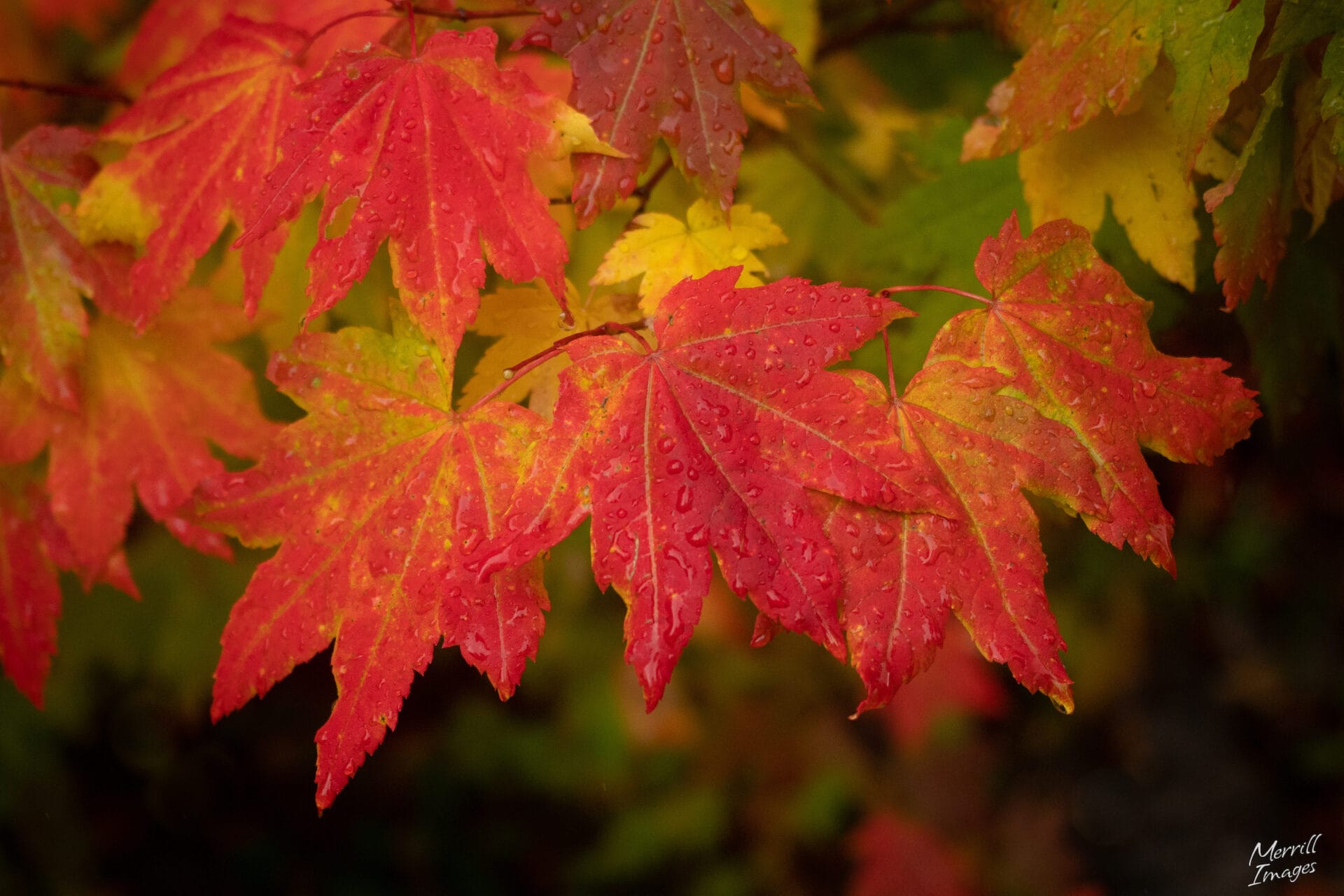Road Trip Along the Mountains to Sound Greenway National Scenic Byway
The Greenway Trust is on a mission to bring communities together to enhance connections to nature while preserving lands and conserving the environment. We have been doing this work for almost 35 years, and along the way, we have identified some gems to explore along the The Mountains to Sound Greenway National Scenic Byway. If you’re visiting the area, consider using this itinerary to plan your trip and visit some of the iconic landmarks that make up the Mountains to Sound Greenway Natural Heritage Area.
Itinerary
-
Seattle Ballard Locks
The Hiram M Chittenden Locks, popularly known as the Ballard Locks, are a historic landmark of civil engineering. They connect Lake Washington with Salmon Bay and the Puget Sound, giving salmons a more secure route back to Lake Washington through the Locks’ salmon ladder. Explore the site where salmon migration and Seattle commerce meets and enjoy the over 100 years of history this landmark represents.

Benjamin Massello via Unsplash -
Klondike Gold Rush Historical Park
This urban park, located in Seattle’s Pioneer Square Preservation District, is a great opportunity to learn more about Seattle’s rich city history. located in the Cadillac Hotel, the visitor center offers insights into the Klondike Gold Rush and its influence on Seattle’s development. With no entry fees, it’s an accessible and informative stop for all visitors.

Signs at the entry to Klondike Gold Rush National Historical Park in Seattle -
Kubota Garden
In the heart of Seattle’s Rainier Beach neighborhood sits a 20-acre-historic Japanese garden started over 95 years ago by a self-taught gardener. Filled with ancient trees and bubbling waterfalls, the Kubota Garden is an oasis that is spectacular in every season and free for the public to explore.

Kubota Garden in the fall -
Lake Sammamish State Park
This 531-acre park provides important habitat for salmon recovery and exciting recreation opportunities. The park offers 6,000 feet of water surrounded by swimming beaches, making this a perfect spot to cool down on hot summer days. There are also picnic areas and several trails around Lake Sammamish State Park that can be enjoyed year-round.
The Mountains to Sound Greenway Trust has worked alongside Washington State Parks, the Snoqualmie Indian Tribe, Trout Unlimited, the Kokanee Workgroup, and thousands of volunteers to implement more than 60 acres of riparian restoration along the 6,000 ft of Issaquah Creek that passes through Lake Sammamish State Park. These restoration efforts began two decades ago but the work continues, you can learn more about our work at Issaquah Creek in Lake Sammamish State Park here.

Lake Sammamish State Park -
Issaquah Salmon Hatchery
Established in 1936, this hatchery was created to restore historic salmon runs damaged by mining, logging, and other development in the Issaquah Creek Basin. It raises Chinook and Coho salmon and supports recovery efforts for Lake Sammamish Kokanee. Learn about salmon life cycles at the visitor center—and depending on the season, see them in action.

Salmon in water at Issaquah Salmon Hatchery -
Snoqualmie Valley Trail
The Snoqualmie Valley Trail is King County’s longest and perhaps most majestic regional trail. It parallels the Snoqualmie River for more than 31 miles from Duvall souitheast to Rattlesnake Lake and Seattle’s Cedar River Watershed Education Center south of North Bend. This trail not only links together the rural towns of Duvall, Carnation, and Fall City, but it does so with beautiful views of the landscape surrounding these towns. This is the best place to observe the Snoqualmie River and enjoy varying views of Mount Si, you may even walk far enough to encounter the iconic Tokul Trestle.

Merrill Images -
Snoqualmie Point Park
Snoqualmie Point Park offers an excellent view of the Snoqualmie Valley and Mount Si. The Greenway Trust played a key role in preserving these lands and building a community gathering place and trail. Since time immemorial through today, this land has been the home of the Snoqualmie People who have continually lived, fished, hunted, gathered on, and stewarded their ancestral lands.
The eight-acre Snoqualmie Point Park was acquired in 2000 through collaborative efforts of the Trust for Public Land, USFS, and the City of Snoqualmie. The site was formerly the location of the Snoqualmie Winery, which grew grapes in Eastern Washington and brought them over Snoqualmie Pass for wine production.

View of Mount Si from the shelter at Snoqualmie Point Park -
Snoqualmie Falls
From time immemorial, the Snoqualmie Tribe has considered Snoqualmie Falls sacred – its birthplace of creation. Mists from the thundering 268-foot waterfall carry prayers to ancestors, and the Falls provide the gifts of food, water, life, health, and healing. The snowmelt from the Snoqualmie Mountains feed the Snoqualmie River as it cuts through the valley to plunge over Snoqualmie Falls creating a breathtaking view. The falls can be accessed through a trail that leads visitors to viewing platforms and down to the foot of the falls.
In the eyes of the Snoqualmie Tribe, the development by settlers for hydropower, railroad development and tourism is a desecration. Puget Sound Energy’s Snoqualmie Falls Hydroelectric Project, built in 1898, is home to the oldest underground hydroelectric plant in the country. In 2001, 155 acres adjacent to Snoqualmie Falls was slated for development, until an agreement brokered by local conservation organizations with the Snoqualmie Tribe, Weyerhaeuser and others recognized the cultural value of the lands and set it aside from development. Today, the Snoqualmie Tribe warmly welcomes all visitors to this sacred place to experience its power in their own way.

Courtesy of Puget Sound Energy -
Northwest Railway Museum
Visit the oldest continuously operated train depot in Washington State. The Seattle, Lake Shore, and Eastern Railway once connected coal mines in Issaquah to Seattle’s Ballard neighborhood. The museum aims to preserve the heritage of the railway and the changes it brought to the region. The Museum’s Railway History Campus Train Shed Exhibit Hall showcases locomotives, passenger cars, freight cars and maintenance equipment. Multiple exhibits provide insight into the role and impact railways have had in the development of the Pacific Northwest.

Board Train tent sign at Northwest Railway Museum -
Meadowbrook Farm Preserve
These 400+ acres of land are entirely open to the public and located between North Bend and the city of Snoqualmie. This space is open to the public thanks to the land acquisition efforts of local organizations and city governments to preserve wildlife habitat, agricultural activities, and facilitate public recreation. This is a great area to grab a picnic, enjoy time with family out in nature, or just have some relief from the hustle of the city alongside wildlife and local plant species.

The sun rises behind Mount Si, viewed from Meadowbrook Farm Park -
Snoqualmie Valley Museum
The Snoqualmie Valley Museum preserves and educates the public on the history of the Snoqualmie valley. Their mission is fueled by their commitment of helping present and future generations understand the past that has shaped the land they inhabit. Although the museum did not officially open until 1979, much of its content had been collected since the 1910s and in the years before opening the museum in the building that currently houses it, the collection of artifacts was housed in various buildings throughout the years. Now, the museum can be enjoyed by members of the public and they even provide online exhibits in their website to satiate additional thirst for knowledge.

The Snoqualmie Valley Historical Museum -
Palouse to Cascades State Park Trail
The non-motorized, cross-state Palouse to Cascades State Park Trail lies on the former Milwaukee Road railway grade from Rattlesnake Lake near North Bend east across Washington State. The level grade of this gravel trail makes it ideal for mountain bikers, equestrians, and walkers. Major trailheads in the Greenway sit at Rattlesnake Lake, Cle Elum, and Hyak (ADA-accessible). Hyak provides close access to the highly a unique experience – walking or biking through the damp, dark, 2.1-mile Snoqualmie Tunnel that travels under Snoqualmie Pass.

Karl Forsgaard -
Middle Fork Snoqualmie Valley
The Middle Fork in the Snoqualmie Valley is a scenic area that offers recreational opportunities for all levels of experience, ages, abilities, and comfort. Visitors can embark on a family-friendly hike through the Oxbow Loop Trail, face a bigger challenge while hiking the Garfield ledges, or accompany any loved one who uses a wheelchair through Camp Brown a trail that is ADA accessible. No matter what your preferences are there is something for everyone in the Middle Fork!
The Mountains to Sound Greenway Trust has worked in the Middle Fork for nearly 30 years. Stemming from the organization’s support of a grassroots effort to save a river valley, our Middle Fork campaign has the goal of ensuring accessibility to the Middle Fork while preserving its healthy ecosystems and wilderness character. By partnering with public land managers and rooting our campaign within our community we are forging a new model for locally based, cooperative management of public lands.

Merrill Images -
Washington Ski and Snowboard Museum
The museum is dedicated to memorializing the ski and snowboard history of the Pacific Northwest. The museum aims to educate on the history of these sports and the role they’ve played in the region. This is a great stop for snow sports afficionados as well as aspiring skiers and snowboarders of all ages.

Washington State Ski and Snowboard Museum -
Roslyn
This 19th century coal mining town is on the National Register of Historic Places and has been designated as a National Historic District. This is a location you would not want to miss when exploring the Greenway NHA. The Roslyn Museum displays the region’s history of coal mining while the historic Roslyn Cemetery memorializes those who have inhabited this town in years past. Aside from the town’s rich history, its location is enough to warrant a visit. Nestled on the foot of the Cascade Mountains, Roslyn is a reminder of how grand the natural world around us is.

Merril Images -
Coal Mines Trail
The trail follows the route of a branch line from the Northern Pacific Railroad. The railroad carried coal and passengers from the mining towns of Ronald and Roslyn to Cle Elum. The Greenway Trust collaborated with local communities to preserve the corridor so it can remain open to the public. The Coal Mines trail is now a well-maintained path for hikers, bikers, equestrians, and snowmobiles. Along the way, travelers can see old slag piles, where mining waste was discarded, as well as several fan houses used to ventilate mines.

The Coal Mines Trail in Cle Elum during the fall -
Teanaway Community Forest
Washington’s first community forest offers striking views, recreation opportunities, and a chance to see conservation and sustainable forestry in action. Hikers, horseback riders, and mountain bikers may use the existing, unmaintained trails at their own risk until sanctioned trails are established through the Teanaway Community Forest Recreation Plan.
The Teanaway Community Forest is home to the three forks of the Teanaway River, an important headwater tributary of the Yakima River. The Teanaway Valley was the summering ground for the Yakama Nation and other Indigenous people. The forest covers 50,241 acres of low-elevation forest and for many years supported timber harvest and grazing. The Teanaway Community Forest today provides important watershed protection for native salmon, as well as a managed forest buffer between local communities and natural fire regimes within the Alpine Lakes Wilderness to the north. Recreationists enjoy year-round opportunities in the Teanaway and access to USFS trailheads such as the North Fork Teanaway trailhead that leads to Esmerelda Basin, Ingalls Lake, Longs Pass and Mount Stuart. The Towns to Teanaway community initiative is building upon the protection work of the Teanaway Community Forest to help the nearby towns of Ronald, Roslyn and Cle Elum transition from resource extraction to recreation and tourism. The initiative is building a well-designed trail system to help absorb user impacts, direct visitors away from wildlife habitat and sensitive areas, keep ongoing maintenance costs low, and connect the downtown centers with nearby public lands.

Merrill Images -
Thorp Mill
The Thorp Grist Mill is the oldest industrial artifact in Kittitas County and the only remaining mill in the state that made the transition from stone buhr to modern rollers. Built between 1880 and 1883, the mill has been restored and maintained so visitors can catch a glimpse of history back to the early days of settlement in Washington state.

Merrill Images -
Kittitas County Museum
This museum preserves and display the history and heritage of Kittitas County. Within the walls of the historic Cadwell building, visitors can learn about the heritage of local farming, the history of the original stewards of the land, local pioneers, technology, and agriculture.

Kittitas County Historical Museum
Looking for more ways to explore the Mountains to Sound Greenway National Heritage Area? Check out this page for tons of ideas to help you learn about this incredible landscape.























